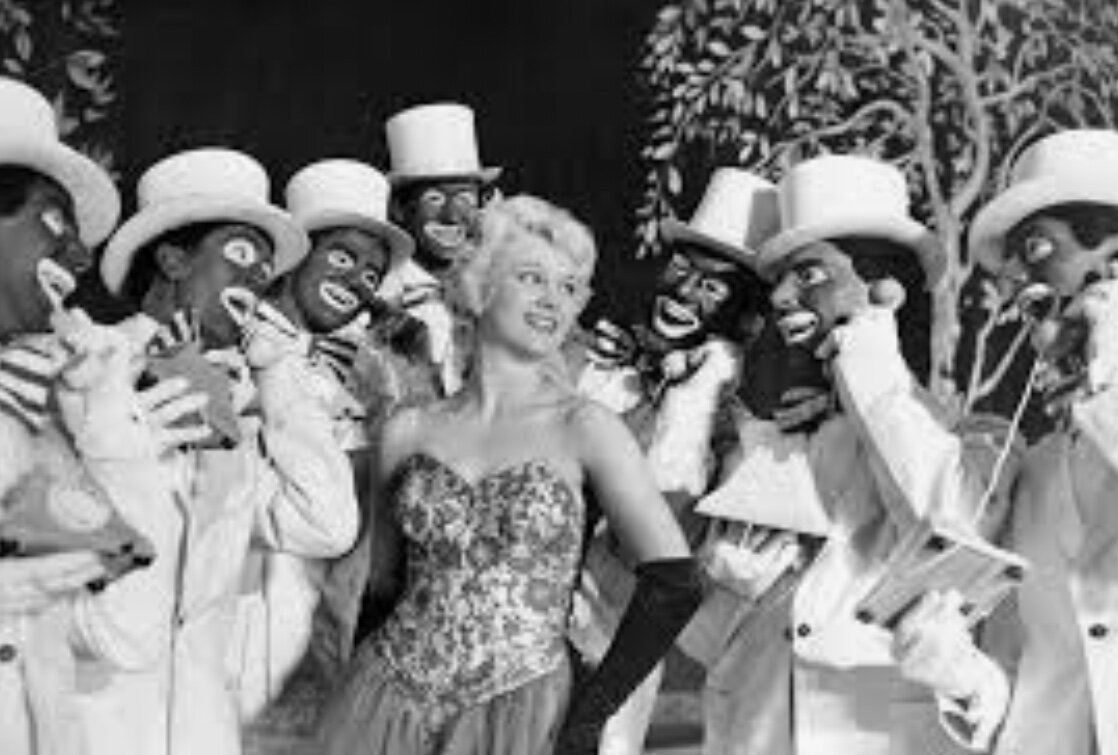Blackface and related issues in dance: Black History Month in Dance, 2021
Black History Month in Dance 169; 170; 171; 172; 173; 174; 175. The history of black people in dance should not be considered without its opposite: the history of blackface, whereby white performers black up to represent black people. One initial point is worth making: strict “blackface” (“minstrelsy”) involves a cartoon whitening of lips and eyes, whereas other uses of dark makeup - often but more loosely also now known as blackface - are intended as a closer and non-caricature rendering of dark skin tone.
But the complexities merely begin there. “Minstrelsy” was an institutionalised part of many western societies till the late twentieth century. In America, a large and enthusiastic part of the audience for blackface entertainment was black. Bert Williams, the highly popular black entertainer, used blackface in some contexts. Al Jolson, the most famous of the white performers to employ blackface, used it to fight for black entertainers. I dimly remember a weekly BBC-TV show called “The Black & White Minstrel Show” (photos 176, 177, 178, 179) the 1960s - I preferred to avoid it but only because I thought it a boring load of clichés, whereas my best friend, at age eleven, enjoyed it - but I now find that that same TV show continued well into the 1970s, long after Commonwealth immigration and race relations had become important political issues.
It’s strange for us now to imagine or even remember the double standards of stage practice in the 1950s, 1960s, and 1970s. Janet Collins, Johaar Mosaval, Carmen de Lavallade, Marian Anderson, Arthur Mitchell, Leontyne Price, Grace Bumbry, Alvin Ailey, Shirley Verrett, Lydia Abarca, and others were winning breakthrough new acclaim for black performers, but characters in George Balanchine’s “La Sonnambula”, Shakespeare’s “Othello”, Verdi’s “Otello”, were played by white performers in black makeup - one “Sonnambula” divertissement was essentially blackface - while the gypsies in Frederick Ashton’s “The Two Pigeons” and Solor, the Indian hero of the Shades scene of “La Bayadère”, were all played with dark tan. (In one of my first “Bayadère” Shades scenes, in 1977, Wayne Eagling’s darkened torso left chocolatey smears all over the white tutu of Monica Mason’s Nikiya.)
But skin colour is only one facet of the many ways in which race is represented. The role of the Blackamoor in “Petrushka” (1911 - photograph 5) has become one of the main reasons this once-revered ballet has seldom been seen in the last twenty-five years. The Blackamoor is not merely black but gross, aggressive, and silly: he salaams a coconut because he can hear it contains goodies he cannot open up. Either he is fatuous because he is black or he is a cartoon of fatuity in whom blackness is just part of the package: neither view is acceptable to many western people any more. (One twentyfirst-century solution has been to play the role in blueface. Another has been to play the role as a cartoon white warrior. My own fancy is that the role should be played with orange skin as Donald Trump.)
In the last decade, the use of black makeup by French and Russian ballet companies has been attacked. It looks as if the Paris Opera is finally giving way in abolishing blackface in “Bayadère”. But complaints made by Misty Copeland about the use of blackface by the Bolshoi Ballet (photos 6 and 7) have fallen on stony ground. When the superstar Russian soprano Anna Netrebko was asked if blackface was necessary for the title role of Verdi’s “Aida”, she announced “Black Face and Black Body for Ethiopien [sic] princess, for Verdi[‘s] greatest opera! YES!” Meanwhile in the U.K. and other countries the role of Shakespeare’s Othello has been given only to black actors for forty years. The debate will continue.
Friday 26 February






